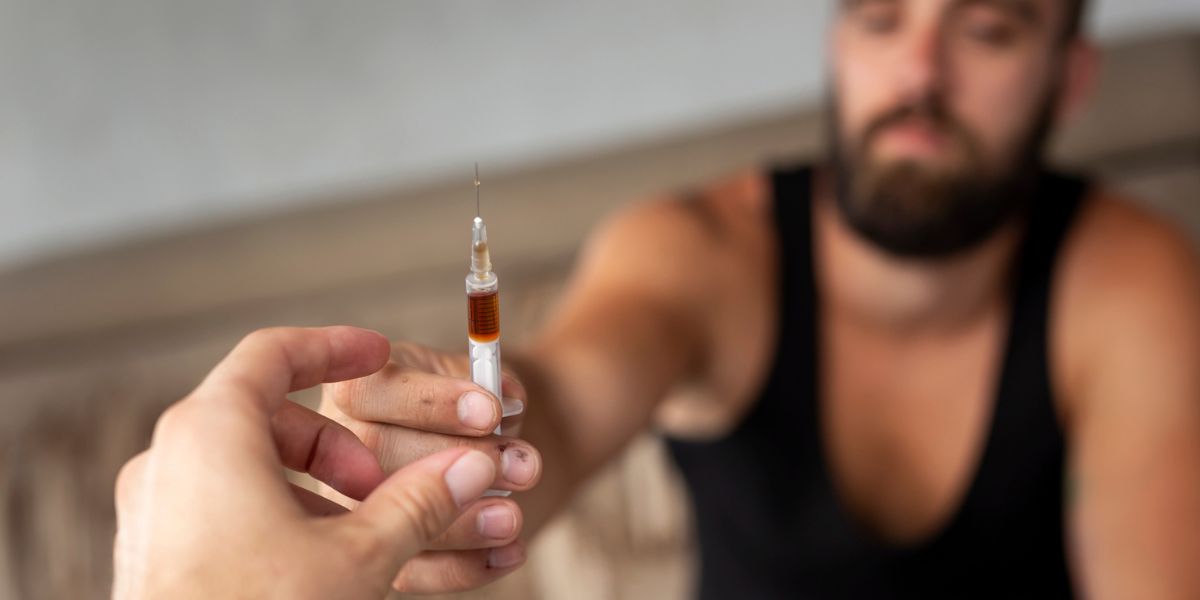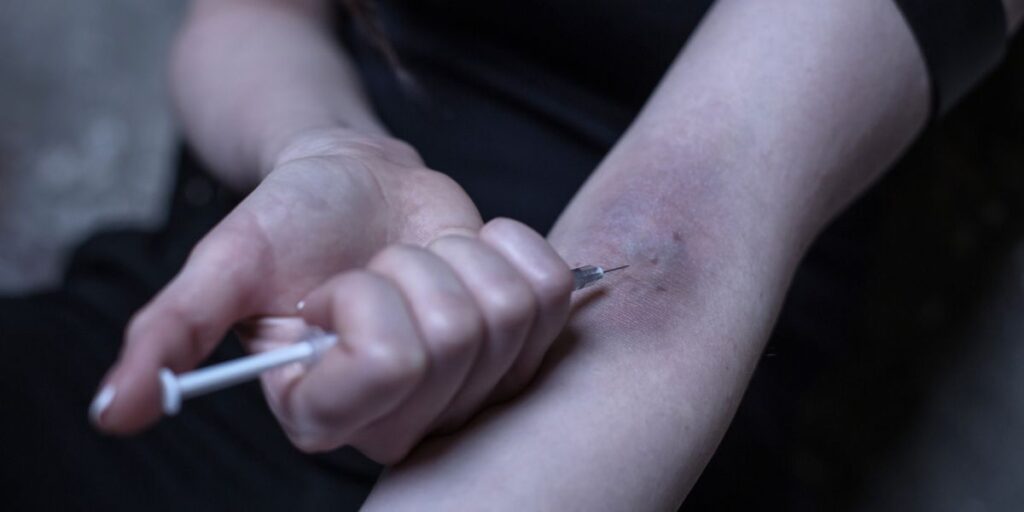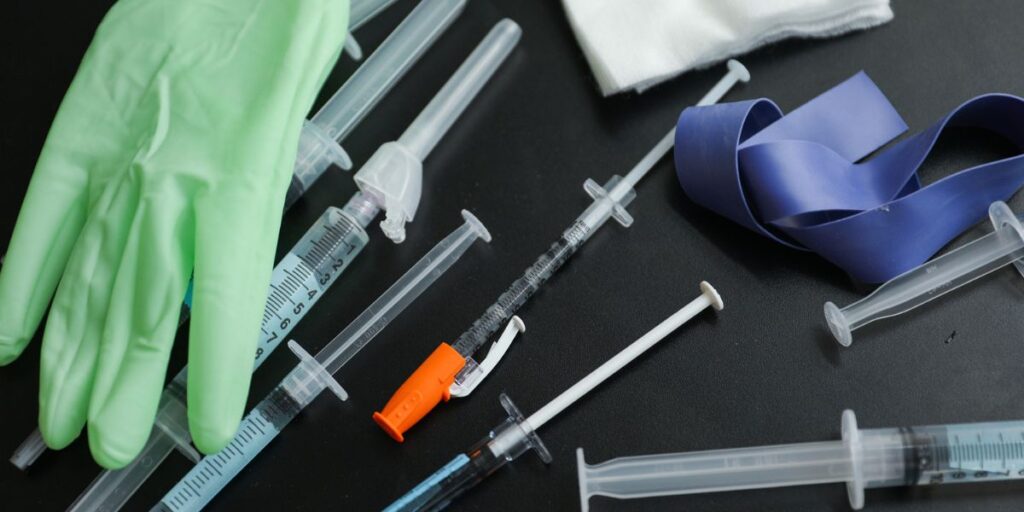The Dangers of Needle Sharing


Medical Writer:
Reviewer:

Johnny Kim
Executive Psychotherapist
Medical Writer:
Reviewer:

Johnny Kim
Executive Psychotherapist
Using drugs is risky, especially for people who inject and share needles. They are more likely to get infections and have long-term health problems.
In the US, many people are injecting drugs like heroin and prescription pills into their veins. They do this to get a quicker high. The opioid crisis is getting worse.
Table of Contents
ToggleThe use of intravenous drugs necessitates specific tools for preparation and injection, which can often be challenging to acquire.
People reuse and share needles due to limited availability, addiction stigma, and lack of awareness about risks. These factors drive this behavior.
People who inject drugs may not know that sharing needles can spread viruses like HIV and hepatitis C.
Educating people not to share needles, recognizing disease symptoms, and learning to care for wounds are crucial measures in combating addiction and the public health issues linked to intravenous drug use.
Sharing Needles
Sharing needles involves two or more individuals using the same syringe, often repeatedly, to inject drugs intravenously.
People often reuse needles for drugs, especially if they don’t have clean needles or know about the risks of sharing them.
Users who inject drugs face heightened risks of contracting infectious diseases because they share needles and syringes.
Drug users mix heroin or prescription opioids with sterile water in a “cooker” to heat the drugs. They use fresh cotton to filter the solution and a sterile needle for injection.
Discussing sharing needles also means sharing other equipment that can spread bloodborne diseases
Even users who employ new or sterilized needles sometimes share other equipment with people.
Sharing Needles: Statistics
Monitoring the health of intravenous drug users is essential for developing effective public health and harm reduction programs.
- The World Health Organization estimates that globally, 11 million individuals use injection drugs.
- Of the 11 million people who inject drugs, around 40% have hepatitis C.
- Currently, 1.4 million individuals who inject drugs are living with HIV.
- Worldwide, 10% of the newly reported cases of HIV are linked to injection drug use.
- The CDC, or Centers for Disease Control and Prevention, approximates that around 1.18 million individuals in the US are living with HIV.
- About 36,000 Americans get diagnosed with HIV every year.
- In the United States, 21% of new HIV diagnoses occur among individuals aged 13 to 24.

Side Effects of IV Drug Use
Injecting drugs directly into the bloodstream is also called “shooting up.” This can lead to more side effects and complications. Also, a risk of bloodborne diseases exists.
Using injection drugs often can make it difficult for users to locate their veins. As a result, they may resort to injecting into muscles or under the skin.
The side effects resulting from drug injection can include:
- Bruising
- Veins that have collapsed
- Visible marks along the veins, known as track marks
- Infections of the skin
- Abscesses, which are swollen areas filled with pus
- Swelling in the limbs caused by poor blood circulation
- Pain in the joints
- Elevated body temperatures or fevers
- Various diseases
Changing where injections are given or stopping drug use altogether can help reduce some side effects. However, some side effects may worsen, leading to infections or more severe health problems.
If you have concerns about a wound or new side effects, it’s important to talk to a doctor.
Sharing Needles Diseases
Injecting drugs can put people at risk for different infectious diseases. Doctors can treat some conditions, while others can develop into long-term conditions. Some diseases have mild symptoms for a long time, while others are a serious threat to health right away.
Using clean tools is essential to lower the risk of getting diseases. Practicing safe sex is another critical way to reduce the risk.
Additionally, getting regular health check-ups can help prevent diseases. The best way to stop diseases like HIV and hepatitis C from spreading is by getting better and staying sober.
Intravenous drug users may be at risk for a range of infections and diseases, including:
- Cotton fever – arises from bacteria in reused cotton filters, leading to symptoms akin to the flu; those with allergies may be more vulnerable
- Cellulitis – painful and inflammatory bacterial infection affecting skin cells
- Necrotizing Fasciitis – known as flesh-eating disease, which can cause rapid tissue damage and can be fatal
- Wound or injection botulism – a severe condition impacting the respiratory and nervous systems, potentially causing paralysis or death
- Gangrene – resulting from an infection that obstructs blood flow, causing tissue death and potentially necessitating amputation or leading to death
- Tetanus – lockjaw, a condition where muscles, particularly around the jaw, become tight and contracted
- Infective endocarditis – when bacteria infects the heart valves, enters the bloodstream, and causes severe health issues
- Hepatitis B – an incurable infection of the liver, more infectious than hepatitis C, potentially leading to liver cancer and death
- Hepatitis C – a potentially fatal liver infection; though treatable, adherence to treatment is difficult for many active drug users, leading to chronic illness
- Human immunodeficiency virus (HIV) – compromises the immune system and can progress to acquired immunodeficiency syndrome (AIDS)
- Syphilis – frequently occurring alongside HIV in IV drug users, particularly because of risky sexual behaviors associated with drug use
- Acquired immunodeficiency syndrome (AIDS) – the advanced stage of HIV infection, severely weakens the immune system, making the body vulnerable to other life-threatening diseases and often leading to death
While many of these diseases remain incurable, early intervention and consistent treatment can control most of them effectively, preventing them from being fatal.
Harm Reduction Model
Injecting drugs with needles is a serious public health issue. Many governments and organizations are providing resources to help reduce harm and prevent drug use.
Harm reduction helps prevent the risk of HIV and hepatitis C. It involves educating users, providing safety resources, and giving health care access. It also includes mental health support and addiction treatment options.
Harm reduction centers offer various preventative strategies and serve as gateways to other supportive services.
Common harm reduction strategies include:
- Syringe Service Programs – known as needle exchange programs or syringe exchange programs, where individuals can obtain sterile syringes and injection equipment and take used items properly for safe disposal. These programs also offer guidance on sterilizing equipment when new supplies are unavailable.
- Safe Injection sites – where trained personnel educate users on safer injection techniques to minimize injury and trauma, offer wound care, get tested for HIV, and screen for various infectious diseases.
- Narcan distribution and overdose prevention – allowing users, as well as their friends and family, to access Narcan (naloxone) and learn how to use it, along with strategies to prevent, identify, and respond to opioid overdoses.
- Treatment program and therapy referral – where individuals determined to stop using drugs and start recovery can receive information and referrals to appropriate programs to support their journey toward sobriety.

Harm Reduction: Tips for Safer IV Drug Use
The Minnesota Department of Health provides straightforward advice for injecting drugs in a safer manner, which includes:
- Utilize a needle only once. Refrain from sharing needles with others or reusing your own. Needles become blunt after a single use. If the vein is missed, use a new, sterile needle for another attempt.
- Rotate your injection sites. Repeated injections at the same site can lead to scar tissue development. It is essential to vary the injection site across different areas and sides of the body.
- Clean the injection area. Clean the area with soap and water before use.
- Avoid sharing any injection equipment. Needles, cooking implements, wipes, or tourniquets, as these can transmit infectious diseases.
- Designated Caretaker. When possible, use drugs in the presence of someone else who can monitor for overdose symptoms and intervene if necessary.
- Develop a safety plan. This includes keeping a supply of various sizes of syringes, cotton, sterile water, and needles.
- Have naloxone on hand. Inform friends and family that it is available for use in an emergency. Carry several doses if possible.
People with drug and alcohol addictions need to have safety measures and harm reduction techniques in place. These measures help them stay safe and reduce harm. People with substance abuse disorders can benefit from these techniques to stay safe and avoid potential dangers. However, these measures are not equivalent to the process of recovery.
Get Drug Addiction Help
Engaging in intravenous drug use might leave you feeling alone, isolated, and at your lowest point, yet there is a path to reclaim your life.
At White Oak Recovery Center, our dedicated and skilled treatment professionals wholeheartedly believe in each person’s ability to carve a significant route to recovery. We are ready to provide abundant support and acceptance.
Detoxification at WORC may seem scary, but we focus on your comfort and safety. We offer medical detox followed by personalized treatment based on science to meet your needs.
Our behavioral therapies, which include cognitive-behavioral therapy (CBT), dialectical behavior therapy (DBT), and various support groups, are designed to empower you with the capabilities to reclaim and sustain your mental and physical health, paving the way for a recovery that lasts.
The treatment specialist team at WORC is eager to address your inquiries and ease any hesitations. Contact us to embark on the initial steps of your recovery journey.

Am I covered for addiction treatment?
Your insurance may cover treatment. Call now for an entirely free and confidential assessment. Recovery starts with a phone call.

- “Opioids and Injection Drug Use.” Minnesota Department of Health, Oct. 2022.
- “Global Hepatitis and STIs Programmes: People Who Inject Drugs.” World Health Organization, 2024.
- Ball, Laura J., et al., “Sharing of Injection Drug Preparation Equipment Is Associated with HIV Infection: A Cross-Sectional Study.” J Acquir Immune Defic Syndr., Aug. 2019.
- Monireh, Faghir-Gangi, et al., “Understanding the Reasons for Sharing Syringes or Needles to Inject Drugs: Conventional Content Analysis.” Addiction and Health, Apr. 2020.
- “HIV Risk and Prevention: Injection Drug Use.” Centers for Disease Control and Prevention (CDC), Mar. 2022.
Medical Disclaimer:







